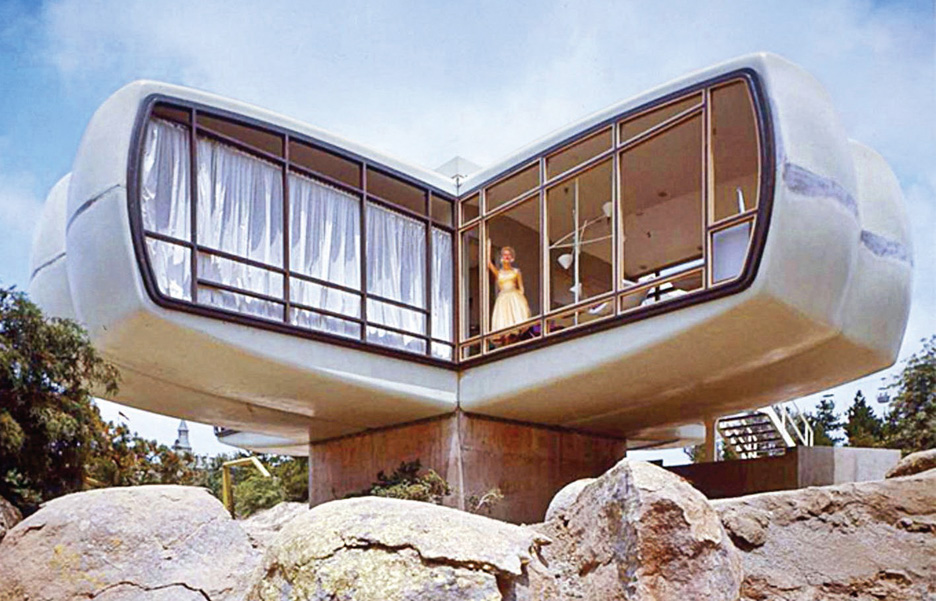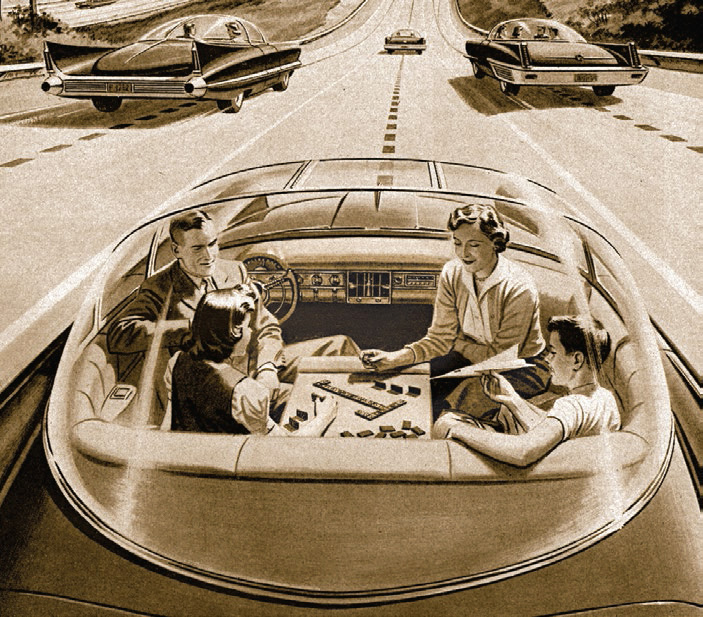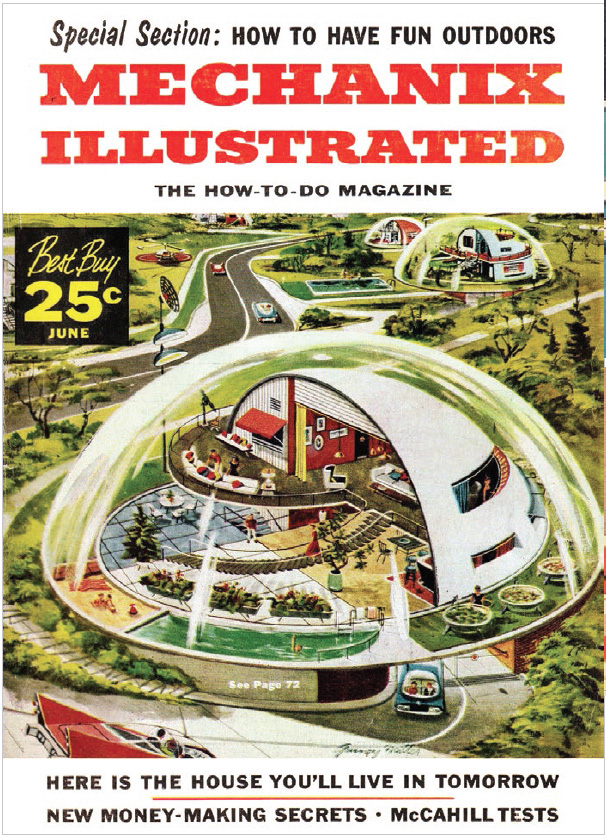Visions of the Future
 |
|
|
"Here is the house you'll live in tomorrow," the home improvement magazine Mechanix Illustrated proclaimed in 1957, displaying on its cover a semi-spherical contraption with roll-up walls, spacious multi-levels and patios, even a swimming pool and small beach.
It was a house that defined indoor-outdoor living, as did the homes of Joe Eichler and other modern builders and architects of the time.
The Mechanix Illustrated home looks heavenly. Yet it is encased within a glass dome, suggesting…what?
A poisonous atmosphere? A heat wave caused by climate change, decades before that term came into vogue? Or is this house planted on Mars?
 |
In the post-World War II years—a time of economic growth and optimism, as well as fallout shelters and fear—some folks tried to imagine life in the year 2000, say, or even 2023. In the process, they focused on technological advances that could improve not just how we cook, converse, and get around, but how we can impact our very bodies, boosting health, making us taller and stronger.
There is a joy in the imagery produced in the 1940s, '50s, and '60s, as writers, thinkers, and illustrators wondered what our futures would hold. There's even a term for our contemporary appreciation for what people in past decades imagined our world would be like today: 'retrofuturism.'
As the online blog 'All That's Interesting' wrote last year, "The dreams of the past began to look quaint and implausible in a way that many found nostalgic."
It's gratifying to see that many of the futuristic dreams of mid-20th century prognosticators did come true, though often not in the details. More fun, though, are those predictions that did not come to pass—at least not yet.
 |
Consider a charming image by illustrator Arthur Radebaugh, who created a series of drawings for the Chicago Tribune-New York News Syndicate in the '50s and '60s about the future, called 'Closer Than We Think.'
One panel featured a svelte green, glass-domed 'Flying Carpet Car' that startles a dog as it whisks by, floating two feet above a tropical beach. "Today's earthbound cars won't turn into low-flying carpets right away, but it may happen sooner than we think!" Radebaugh tells us.
Radebaugh wasn't just making his miracle up. He attributes the hovering car's concept to "Andrew Kucher, Vice President of Engineering at one of our major auto companies."
Prognosticators from the period often predicted devices that have come to benefit—and simultaneously bedevil—people today.
 |
Radebaugh's 1961 image of a Visaphone, as envisioned by the Bell Telephone Lab, shows a man, earphone in place, conversing, camera to camera, with a flirtatious young woman, much as we might do today on Zoom. The man's wife, seated across the room from him, seems oblivious.
Another Radebaugh image shows 'driverless cars,' which of course we will all soon be enjoying—but, if design minimalist Elon Musk has its way, without the batwing tailfins of Radebaugh's model. The well-dressed gentry inside the glassy vehicle appears to be playing cards.




